The green light

Underwritten by MetLife, the new Wonders of Life pavilion wouldn’t just be a $100 million expansion (worth over $225 million today); it would be an opportunity to test out the emerging gameplan of new Disney CEO Michael Eisner.
If you ask the most ardent EPCOT purists, Eisner inherited EPCOT Center at its conceptual peak and seemingly had approximately zero idea what to do with it. Frankly, the industrious, educational, intellectual, and character-free park was pretty inherently at odds with Eisner’s M.O. for the parks: bringing thrilling, modern, pop culture relevancy to Disney’s theme parks using A-List stars, blockbuster budgets, and Hollywood flourishes.
Still, it stood to reason that the new Health and Life pavilion could be Eisner’s entrypoint for getting EPCOT up to speed. And luckily, Imagineering had just the tool to make it happen.

After years of development, 1987 saw the first true E-Ticket of Eisner’s “Ride the Movies” era open at Disneyland: the Lost Legend: STAR TOURS. Using a cutting-edge new ride system called the ATLAS – Advanced Technology Leisure Application Simulator – STAR TOURS unthinkably merged projected media into a flight training simulator supersized for high-capacity crowds, sending guests soaring through the Star Wars universe. It goes without saying that STAR TOURS was the kind of hit Disney Parks hadn’t had in decades.
But STAR TOURS hadn’t just awakened the long-dormant Disney Parks from pop culture slumber; it had armed Imagineering with a decidedly modern, thrilling, multimedia medium for future attractions, easily adaptable by way of new on-ride footage… literally, the birth of the Age of the Simulator.
The timing couldn’t have been better. Back on the East Coast, the idea of a motion simulator was novel and exciting and fresh. A simulator could be a fast-paced – but still-scientific – counterpart to the slow-moving, intellectual dark rides that had given EPCOT Center such a drab reputation.
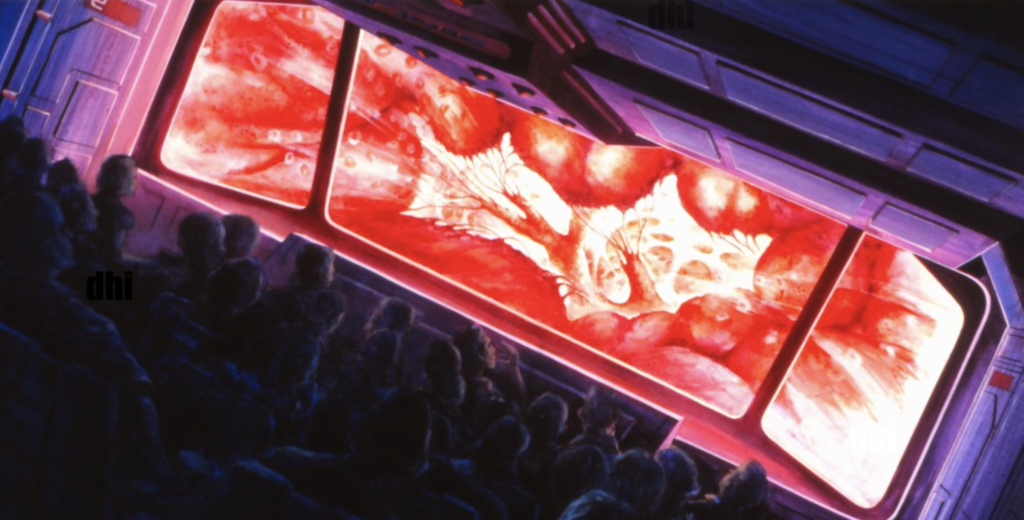
And just as STAR TOURS could contain the entire Star Wars galaxy in a relatively small footprint, a simulator offered a decidedly-technological solution to the too-large set pieces that had made the Incredible Journey Within an engineering impossibility a decade earlier.
Using the ATLAS, Disney was practically guaranteed an anchor attraction that would bolster EPCOT’s standing under Eisner’s regime, while MetLife was all but assured that the hottest must-see ride in all of Walt Disney World would bear its logo.
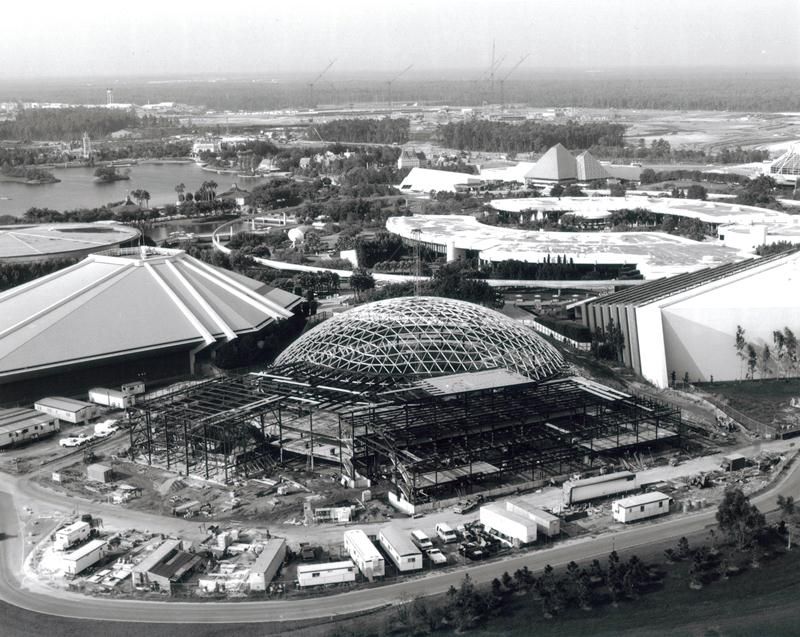
As construction began on the 250-foot diameter, 65-foot-tall geodesic dome (and the hidden auxiliary showbuilding extension that would house the simulator), work began on creating the ride film that would bring guests’ journey through the human body to life.
And in keeping with Eisner’s cinematic style, inspiration came from the silver screen…
Fantastic Voyage
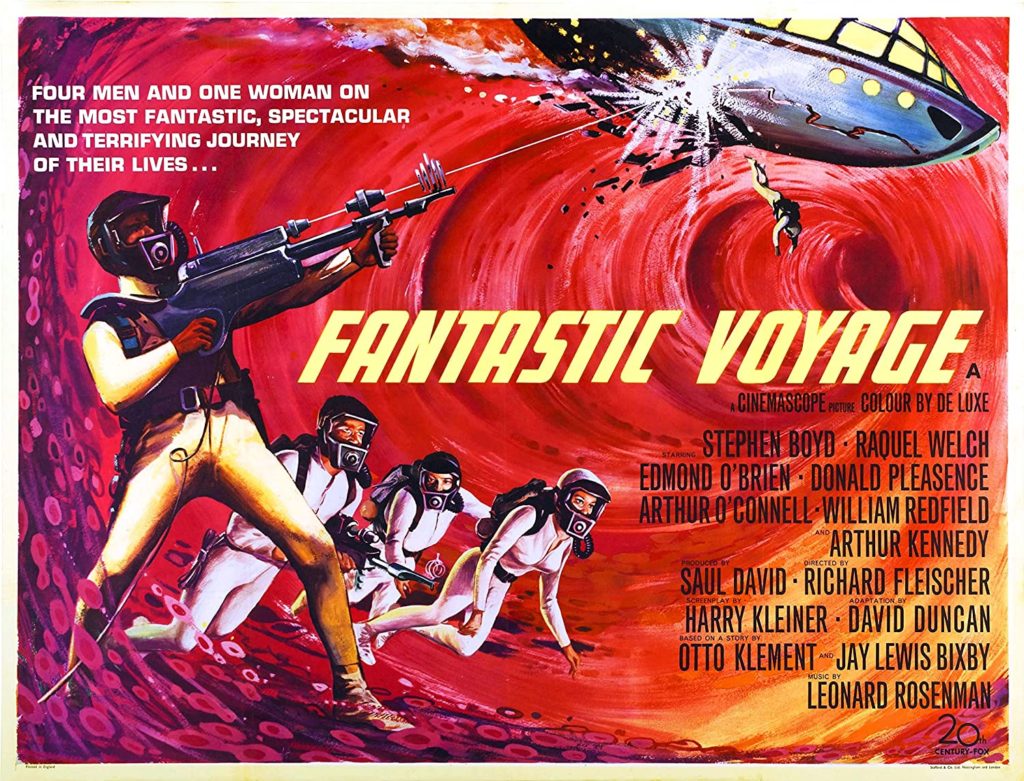
Enter Fantastic Voyage, a 1966 sci-fi classic. Set in the Cold War amid escalating tensions – and technological breakthroughs – between the U.S. and Soviet Union, the film follows the emergency, experimental attempt to revive an American scientist trapped in a coma after a Soviet assassination attempt.
Racing against the clock to reach the blood clot that keeps him unconscious, a team of scientists board a repurposed submarine, the Proteus, to be miniaturized and injected into his blood stream. In an epic adventure set within the human body, the Proteus crew faces the turbulence of the heart, attacks by antibodies, and destructive soundwave shocks of the inner ear with just an hour before the effects of miniaturization wear off.

As evidenced by its two Academy Awards (for Art Direction and Special Effects), Fantastic Voyage is a gorgeous film even today, memorably bringing the inside of the body to life in stunning, vivid colors, textures, practical effects, and production design techniques. And believe it or not, the 1966 film also has a noteworthy relationship with Disney…
Fantastic Voyage was directed by Richard Fleischer – director of Disney’s own submarine-set, sci-fi epic, 1954’s 20,000 Leagues Under the Sea. As well as reuniting with 20,000 Leagues‘ technical advisor Fred Zendar, Fleischer also hired Disney Legend Harper Goff (the designer of the iconic Nautilus sub) to create Fantastic Voyage’s submarine, the Proteus! Talk about a small world… literally.
Fantastic Voyage might’ve had all the making of a film-tie-in you’d expect from Eisner’s “Ride the Movies” era, but unfortunately, it was a 20th Century Fox production, not Disney’s. And while Eisner demonstrated often that he didn’t mind licensing external IPs for Disney Parks, chances are that the film was a little too old to reach Eisner’s blockbuster bar or to meet his mandate that the parks involve characters, stories, and stars that mattered to modern audiences.
So while Fantastic Voyage would certainly inspire Disney’s new simulator, it would be up to Imagineers to create a compelling world, mythology, and even a vehicle to carry guests into the human body.
Behind the body
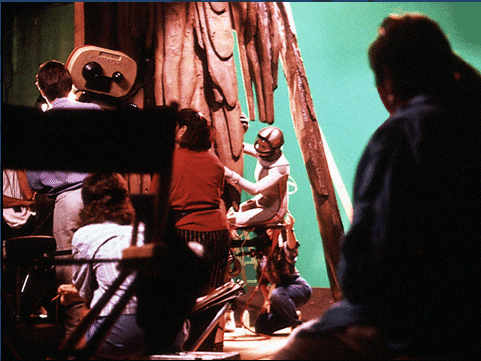
Like Star Tours, the new Body Wars would need to be filmed using practical sets and miniatures. But to meet Eisner’s new cinematic standard, it would also need some star power. Elisabeth Shue (then best known for 1984’s The Karate Kid, 1987’s Adventures in Babysitting, and the in-production Back to the Future – Part II and Part III) was cast as Dr. Cynthia Lair, the ride’s main protagonist (above).
Meanwhile, Tim Matheson (of National Lampoon’s Animal House fame) starred as Captain Braddock, on-ride narrator for guests.

Still, the biggest name on the set of Body Wars was behind the camera. The film portion of the ride was directed by Leonard Nimoy – the incomparable actor behind Star Trek‘s Spock. (Nimoy reportedly signed on as a favor to Eisner for greenlighting Three Men and a Baby at Touchstone Pictures.)
According to legendary Disney historian Jim Korkis, Nimoy said of the experience, “Even though Body Wars is the shortest film I’ve ever directed, it presented a new set of challenges. We had to take into account that the film will be shown inside a moving theater – the simulator. So, in order to intensify the sense of motion, we built a set that actually moves, and rocked it during filming to match the pitching and rolling of the simulator.”

As with Disneyland’s Star Tours, Body Wars was made possible by four motion simulator pods, each affixed to six hydraulic servo actuators, capable of “six degrees-of-freedom” motion. Each 20,000 pound pod could hold 40 riders, providing a substantial throughout even among EPCOT’s famously high-capacity simulators – and making the Wonders of Life pavilion one of the most high-capacity attractions in all of Walt Disney World.
Wonders Abound
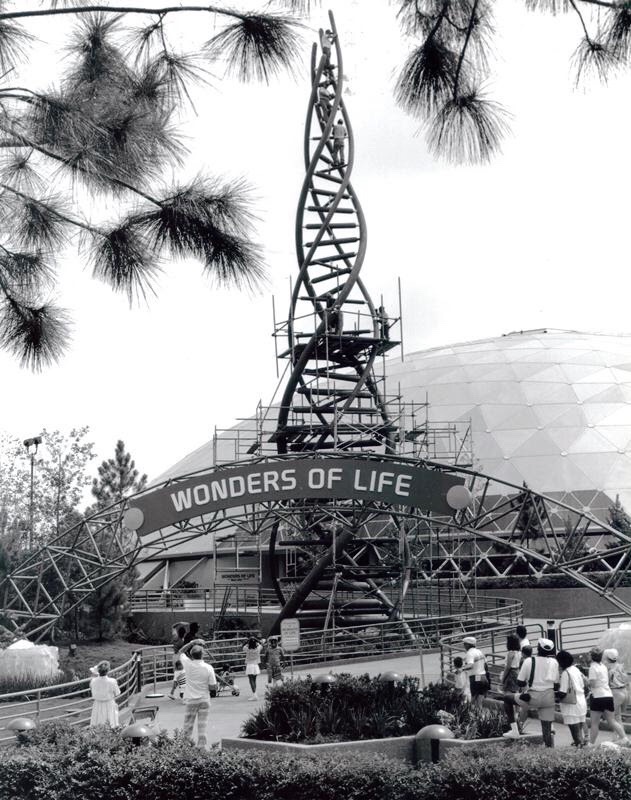
Without a doubt, Body Wars was poised to become the new high-tech, star-studded anchor of EPCOT, positioning Wonders of Life as a headlining addition to the park. Executives and Imagineers hoped that Body Wars would change EPCOT forever. It did… Just maybe not in the way they’d expected…
On the next page, we’ll step into the world they created for their own fantastic voyage and see what became of Epcot’s promised E-Ticket.


